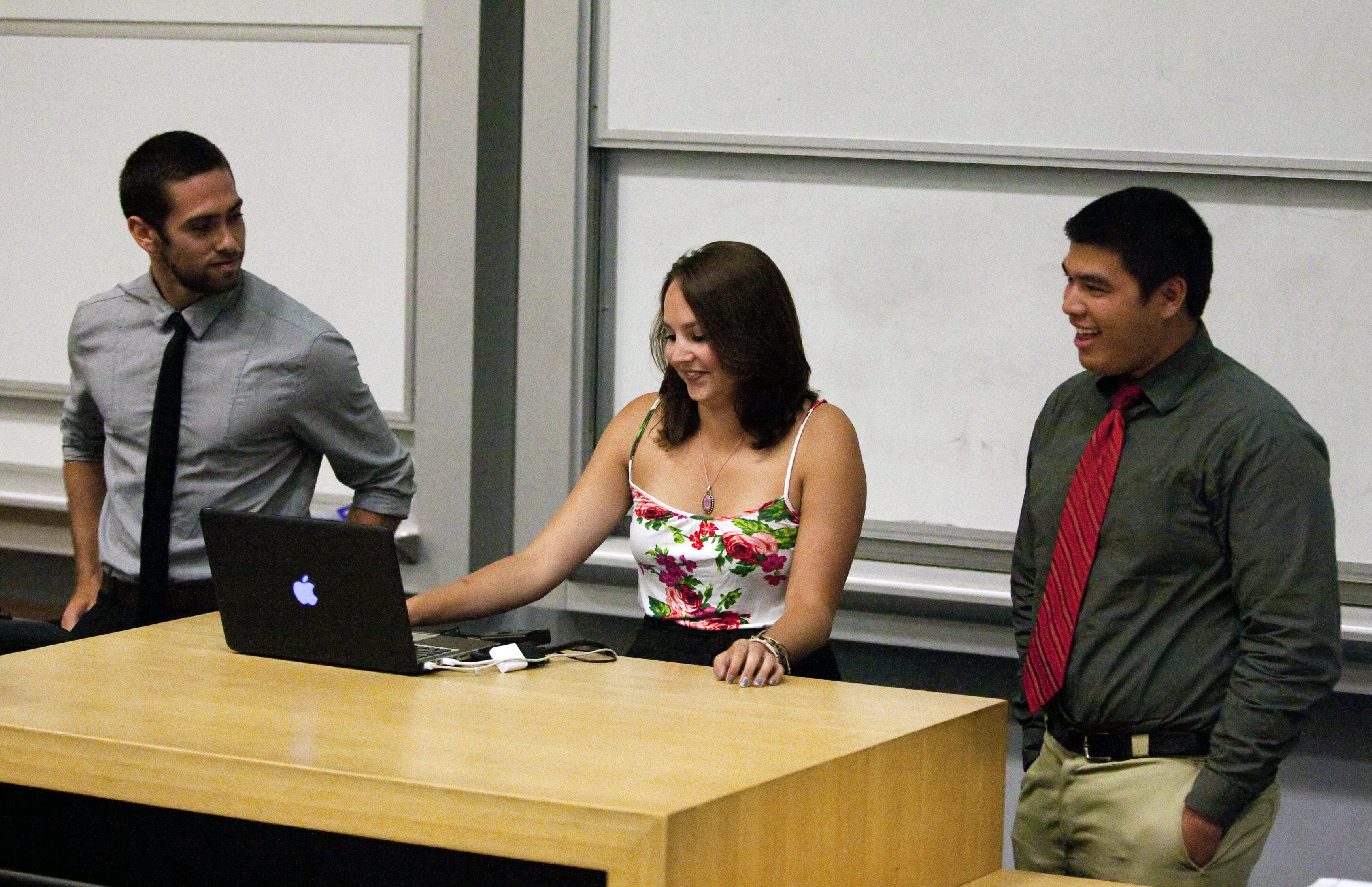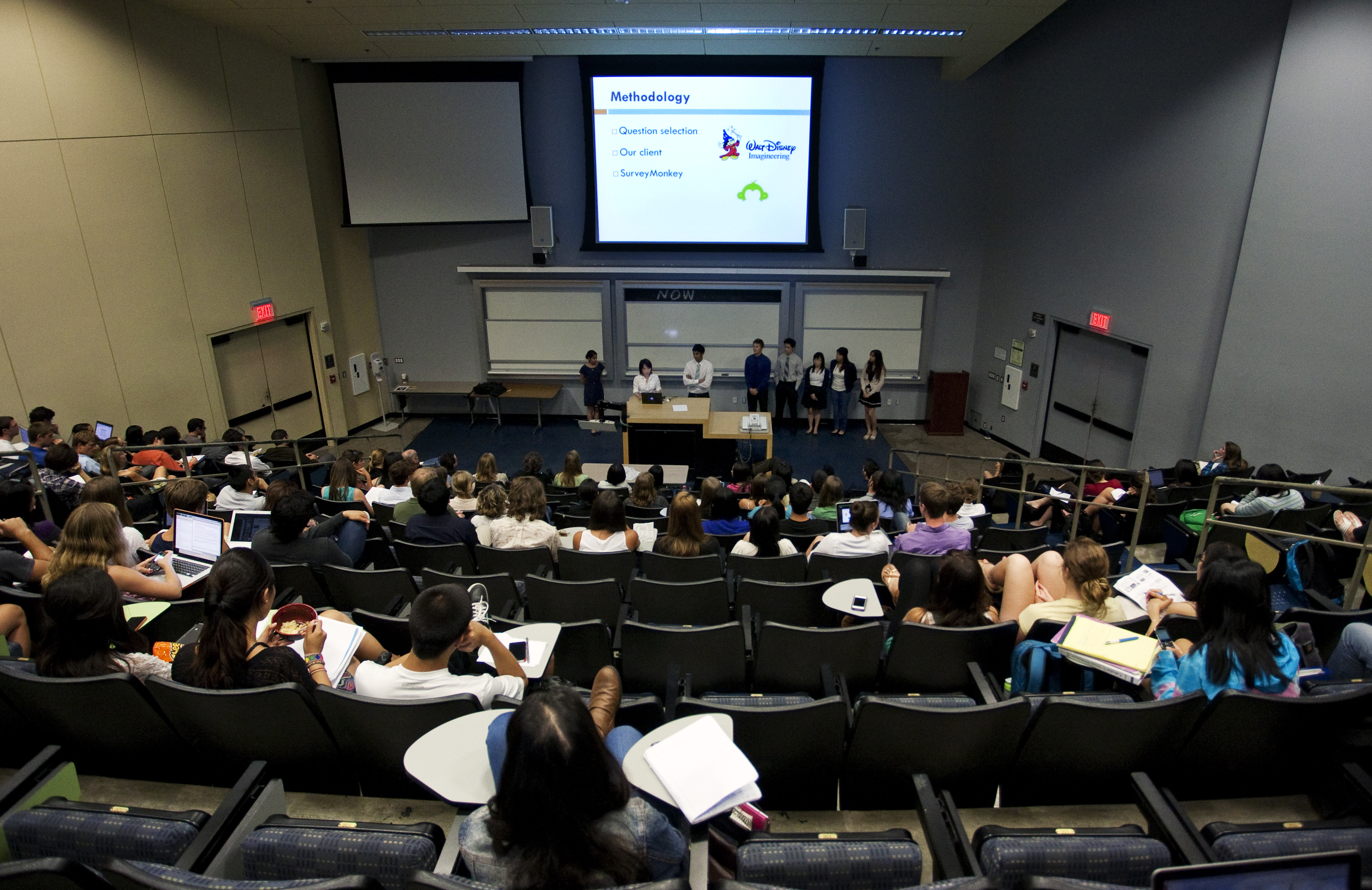
Fourth-year environmental science students Jaryd Block, Brittney Laver and Dennis Mabasa present on vegetation change in Rancho Sierra Vista, Santa Monica Mountains National Recreation Area at the environmental science senior practicum presentations.
Correction: The original article contained several errors. Dennis Mabasa and Anuraag Jhawar are environmental science students. The original photo captions also contained several errors. Environmental science students presented their senior capstone research on Eco-Certification programs for green hotels at UCLA’s Environmental Science Senior Practicum on Wednesday. Fourth-year environmental science students Jaryd Block, Brittney Laver and Dennis Mabasa presented on vegetation change in Rancho Sierra Vista, Santa Monica Mountains National Recreation Area at the environmental science senior practicum presentations.
Hiking into the Rancho Sierra Vista in the Santa Monica Mountains, Dennis Mabasa encountered a rattlesnake, ready to bite, two feet away.
Mabasa, a fourth-year environmental science student, said his experience with the snake was only one of the many challenges he encountered working on his senior capstone project this past year.
Mabasa and his group were among 76 students who presented findings from their year-long analysis on topics such as bacteria and green hotel practices in front of peers and faculty at the UCLA Institute of the Environment and Sustainability Wednesday night.
Mabasa’s group, for example, presented its analysis on how vegetation in the area has changed over the last six decades.
Over the course of the year, the team of five students worked with the National Park Service to determine where the agency should plant specific types of trees based on the physical terrain.
The project is part of Environment 180: Practicum in Environmental Science, a mandatory year-long course for all environmental science students.
During the practicum, small groups of students work on real-world environmental problems with clients off campus, said Cully Nordby, academic director of the Institute of the Environment and Sustainability.
In the fall, students take a lecture lab course about geographic information systems, techniques that analyze and present geographical data. Then, the students individually write a literature review of an assigned environmental topic, said Travis Longcore, a professor in the institute.
For the next two quarters, students work with their groups and a faculty adviser to meet with a client and figure out the problem they need to address, Longcore said.
The practicum focuses on ongoing environmental issues that a growing urban population has to wrestle with, Nordby said.
Businesses, state agencies and non-profit groups propose topics to a committee, which evaluates them based on feasibility and the availability of advisers in related fields.
The capstone project was established six years ago as a way to help students prepare for work in the sustainability field when they finish college, Longcore said.
Advisers act as coaches for students but students are largely left on their own for the project, Longcore said.
“We’ve been able to get our hands dirty, meet real people in the world of sustainability, and I feel like we’ve been able to make some sort of a difference,” Mabasa said.
Anuraag Jhawar, a fourth-year environmental science student with a concentration in environmental engineering, said the practicum is one of the biggest things he has worked on at UCLA.
Besides many long hours in Powell Library and countless hangouts, the main challenge his group faced while working on the survey was with semantics, Jhawar said.
Jhawar’s group worked on a survey about consumer preferences for green hotels for the Walt Disney Company.
The group had to make sure their client, adviser and group members were all happy with the wording of the questions, he said.
“Students can say they have had project management experience and have grappled with an almost paralyzing number of choices they have to make,” Longcore said.
Now that the project is over and the groups have presented, the research will be posted online at the Institute of the Environment and Sustainability’s website. It may also appear in print if approved by the client.
“(The project is) not something that just gets a grade and gets thrown out,” Mabasa said. “(The results are) going to stay around for a while and help people.”
